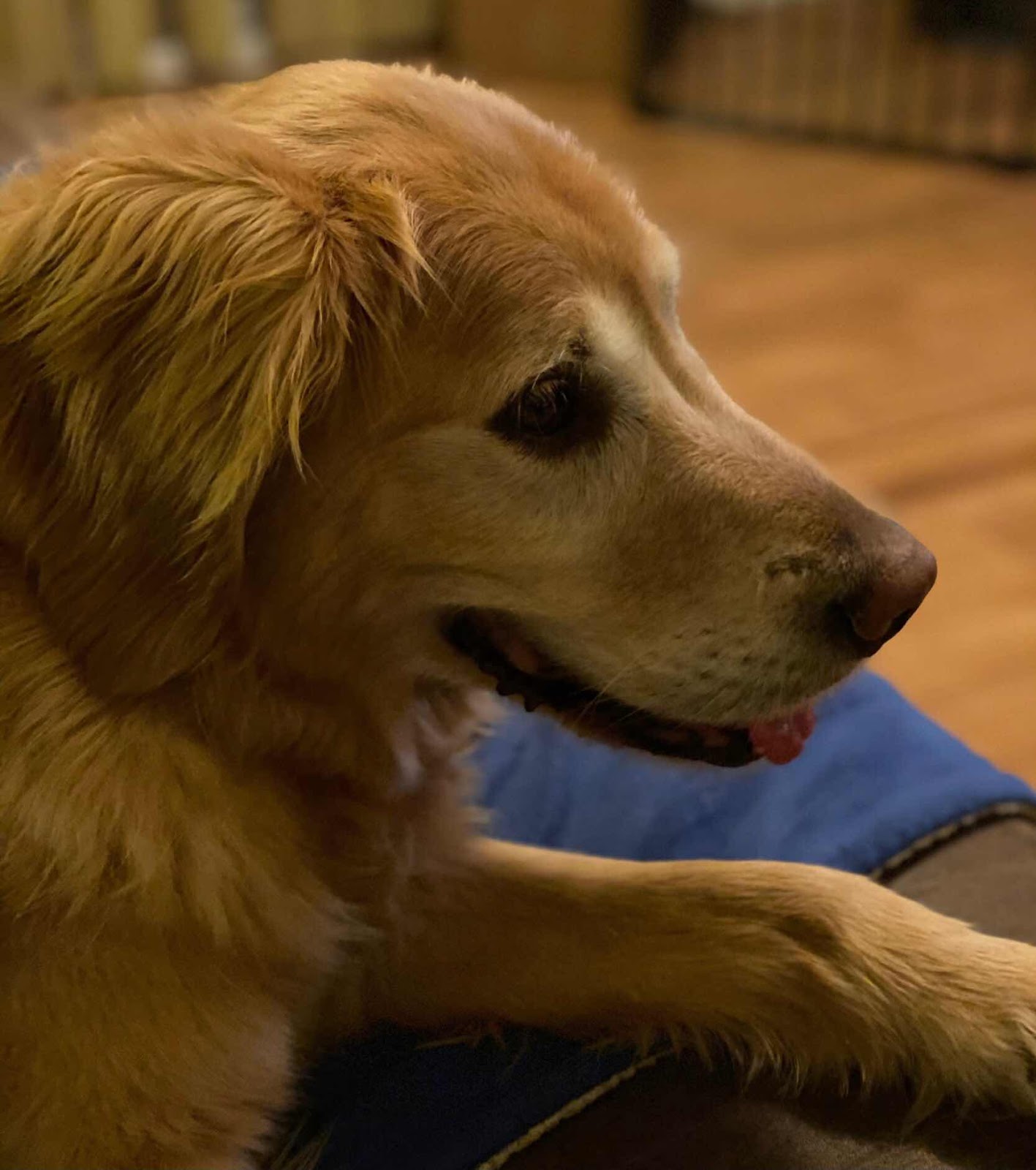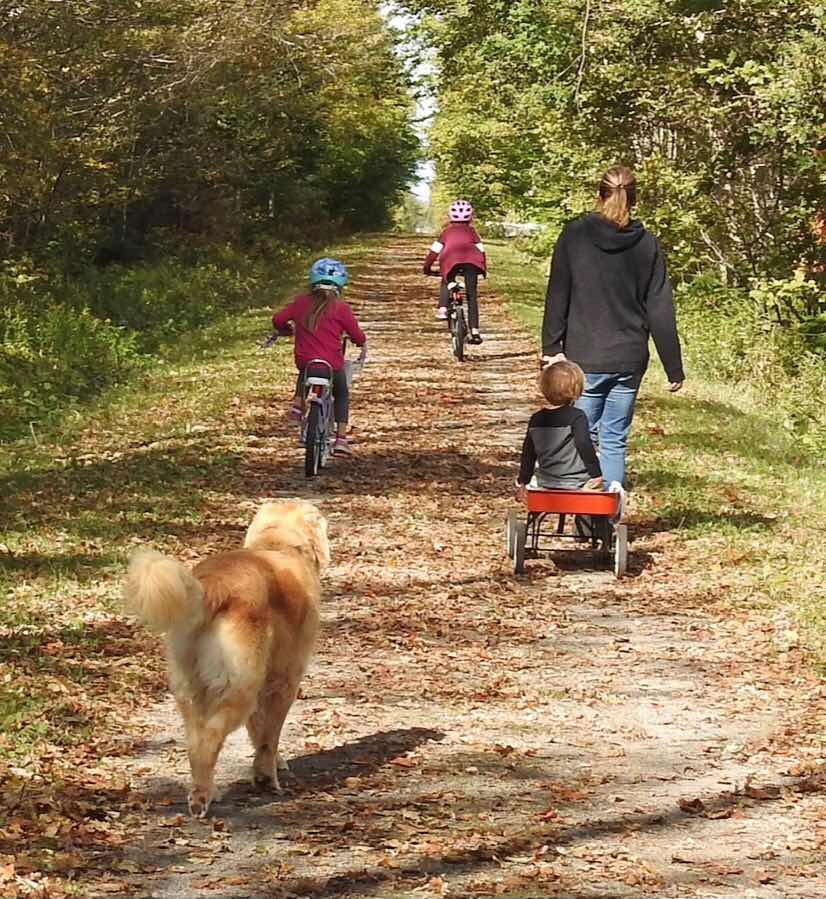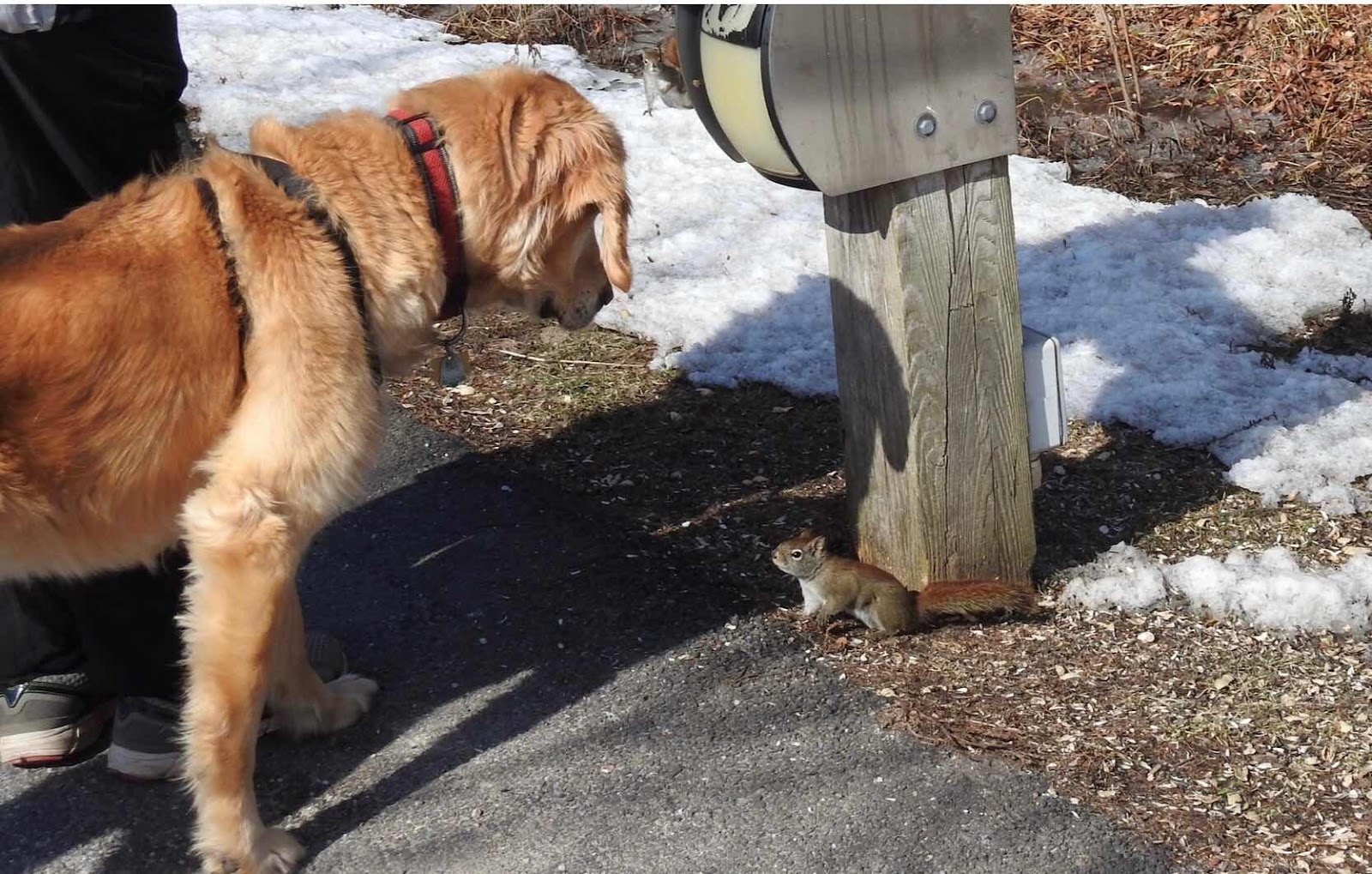Our beloved grand-dog, Georgie, died on Thursday, after a short illness. She was fading over the last few weeks and deafness had limited her life somewhat. She died of cancer according to the vet.

Though her family is devastated, we want to remember the joy Georgie brought to our lives.

Just about every photo of the family taken over Georgie’s lifetime, she photo-bombed. She never missed out on an event and was always around the kids, in the background, if not the foreground of every photo. She was happiest around the family and was great with kids which all of us where when we were with Georgie.

With my husband and I, she loved walks around the Bonshaw Hills, where, on days without many hikers, she could run back and forth between us on the trail.

If she was walking with the leader, she always made sure the trailing person was okay and not far behind. She broke land speed records running back and forth.
On the boardwalk, we always walked slowly with Georgie to allow her to sniff for her nose’s pleasure. She also loved the squirrels and chipmunks and always stopped to watch them, or try to catch one.

The golden always stopped to wait for me when I was behind taking photos too. She looked after her pack.
Georgie loved any time we walked on a beach with her. We always let her run into the water, where she splashed and jumped for joy, like a small child.

She soaked us when she shook out her long golden fur.
Being a true island girl, Georgie love that red sand too. Imagine cleaning that fur after she rolled in the sand.

And speaking of fur, it was everywhere. She really required daily brushing and major brushing and clipping regularly. You could stuff pillows with it. Her furry legacy will be with us for a while under furniture or stuck to pads under table and chair legs.

The car was one of Georgie’s favourite places. She sat in the back seat, on her blanket, looking out between the seats at the road. She was excited to see where we were going and always recognized a dairy bar when we stopped at one. Georgie loved the soft serve ice cream and always had one of her own.

At our house, her mat with treats inside was rolled up on the floor of the kitchen when she arrived. She ran there first, unrolled the mat, ate the treats, then came to find us.
Also at our house with the kids when Newfoundland music was playing for a few scuffs, as Newfoundlanders refer to dancing, Georgie was in the middle of everything. Within a minute, she was up on her hind legs. I’d hold her front paws and she’d dance with us. She loved having a few scuffs as much as any of us.
In our family room, she had a special place on the couch, with a blanket over her spot to collect the golden hair. If we didn’t have the blanket on the couch when she went in that room, she’d stand in front of us, looking at us, then at her spot, at us, then her spot, until we put out her blanket.

We always played Find the Treat with Georgie after supper. She’d wait as we hid treats around the adjoining rooms and she’d hunt them down on command. Every evening after supper, she’d stand in front of us, staring at us until we played with her.
Georgie gave great comfort if we were sad. Shortly after we moved to Prince Edward Island, my last remaining family member of my father’s generation, my Aunt Angela, died. Georgie was there when I was crying and she put her head on my lap and stayed there for the longest time. She sensed the feelings and responded to it.
The golden can’t provide physical comfort through this current sadness but these memories help. She’s gone on ahead!

Goodbye, sweet Georgie!

